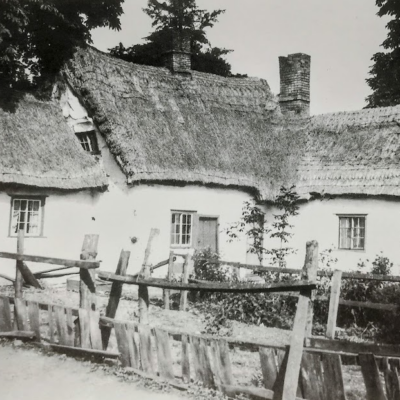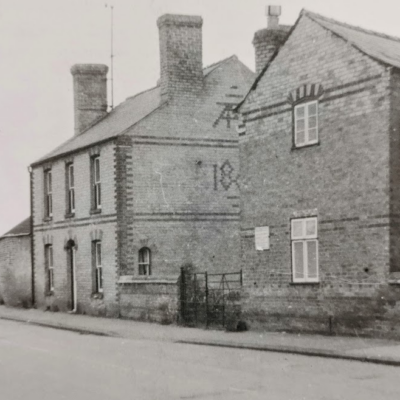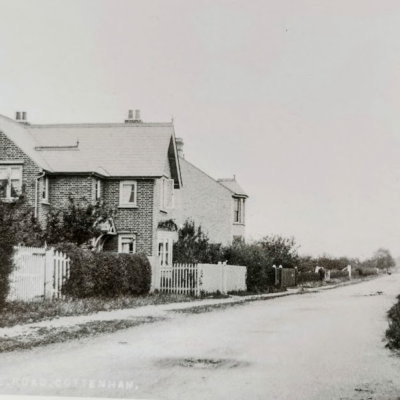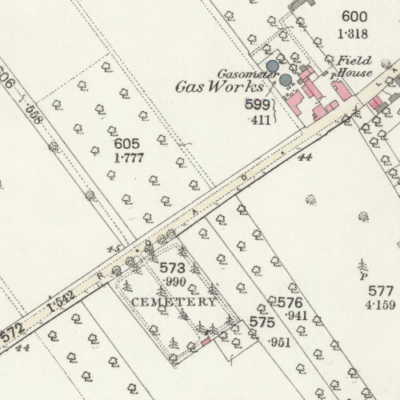Search by topic
- archaeology
- architecture
- bricklayer
- Building of Local Interest
- carpenter
- church
- crime
- dressmaker
- fire
- Great Eastern Railway
- listed building
- medieval
- oral history
- Public House
- Rattee & Kett
- Religious House
- Roman
- scholar
- school
- Then and Now
- tudor
- women
- work
- world war one
- world war two
Search by text
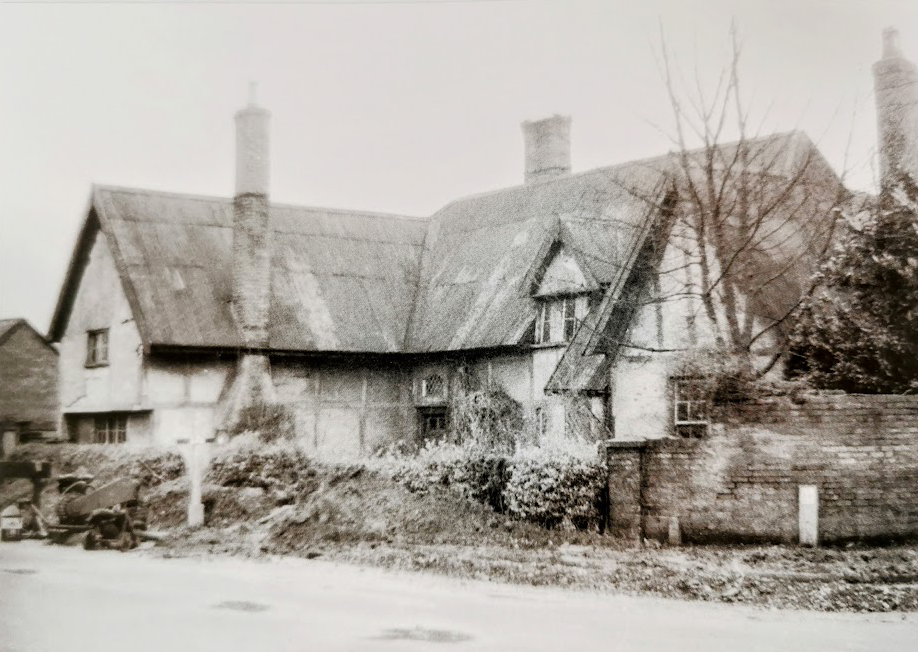 15th century house demolished in 1962 (photo E Smith)
15th century house demolished in 1962 (photo E Smith)Cottenham Village College
History of the Village College site
A 15th century house was one of the buildings demolished in 1962 to build the Village College. It had survived the fires of 1827 and 1847 and had been coverted into two cottages.
At the beginning of the C19th it was the home of Richard Bacchus, and was later owned by James Ivatt, William Peed and then Ephraim Gautrey.
On the right of these cottages was the home of James Ivatt, considered the wealthiest man in Cottenham when he died in 1870. He owned 600 acres of land, ten houses, and £16,000 in cash. His toal wealth was over £100,000. The money passed via his only daughter, Mrs Sumpter of Histon in 1877, to her solicitor, Wiiliam Peed, In the 1890s his son installed the first bathroom in Cottenham.
In 1899 Ephraim Gautrey purchased the two buildings with 18 acres as well as another 300 acres for £8,200.
1901
Ephraim Gautrey, 53, seed merchant and farmer, b Cottenham
Ann, 51, b Rampton
Sarah E, 24, b Cottenham
Agnes, 22, b Cottenham
Walter J, 21, b Cottenham
Horace E, 19, b Cottenham
Mr Gautry’s daughter, Mrs Elizabeth Haird, sold just the houses and their 18 acres for £7,000 in 1956 for the Village College.
The pond at the front of the college was at the rear of the larger house and is still known as ‘Gautrey’s Pond.’
Contribute
Do you have any information about the people or places in this article? If so, then please let us know using the Contact page or by emailing capturingcambridge@
License
This work is licensed under CC BY-NC-SA 4.0








